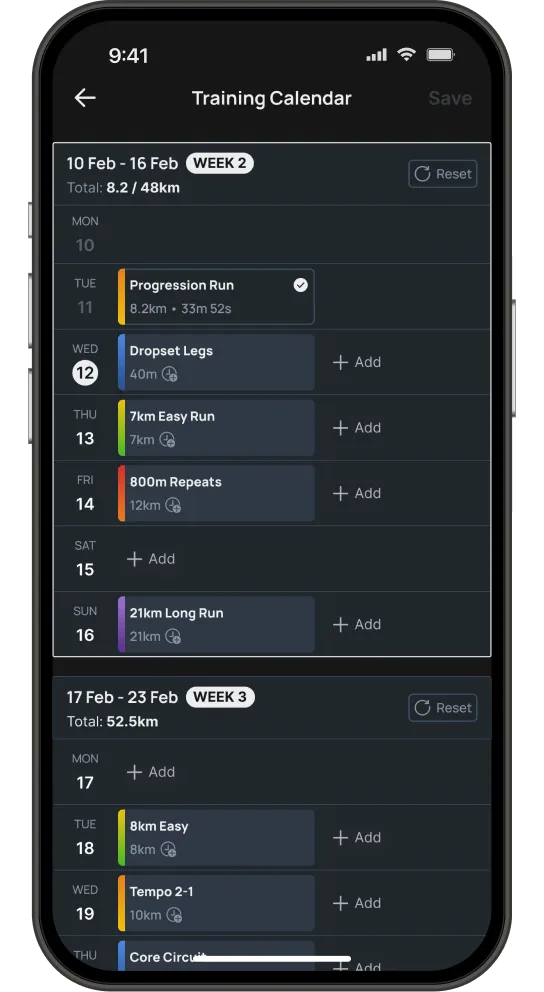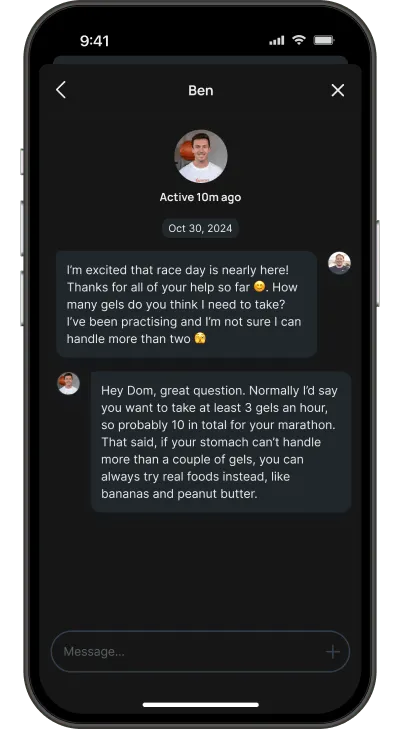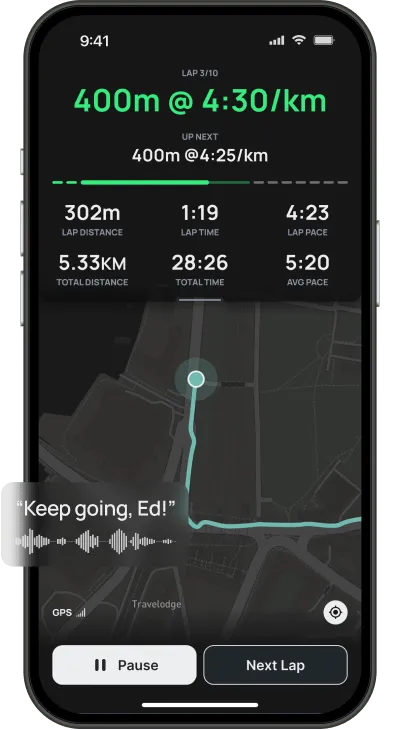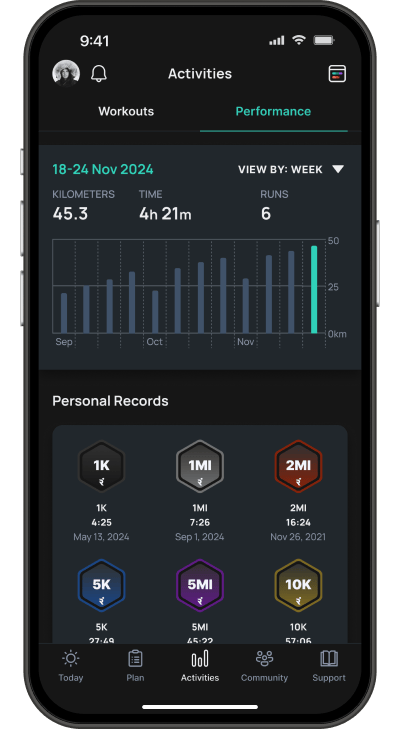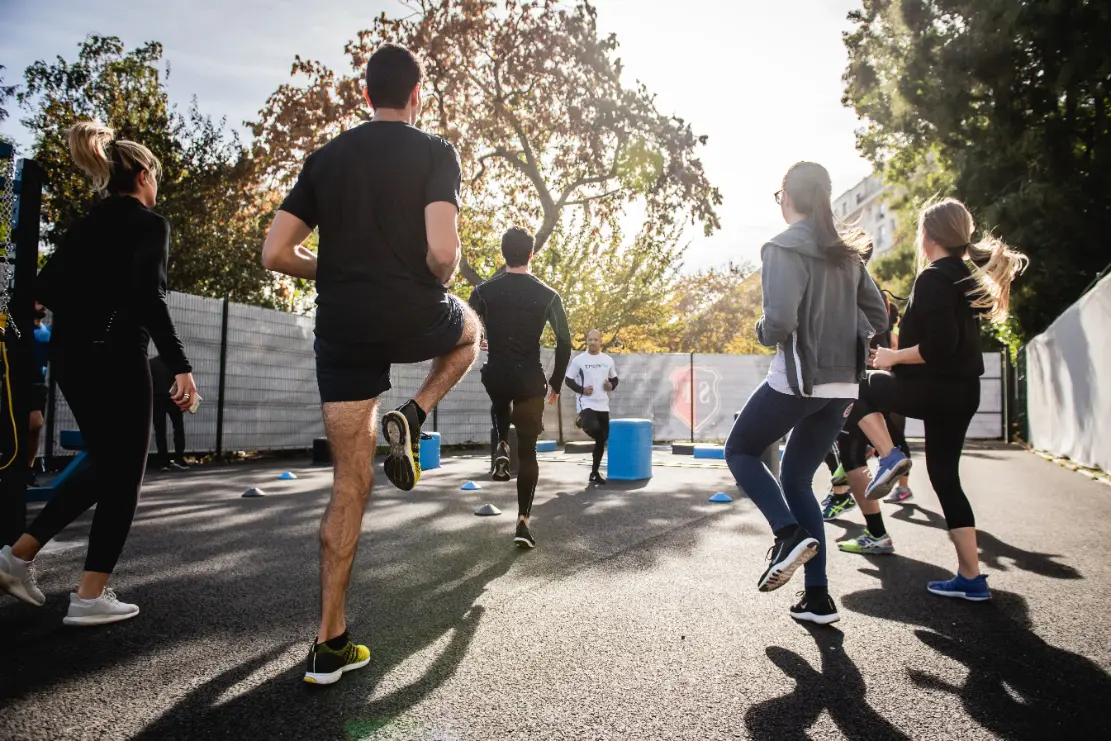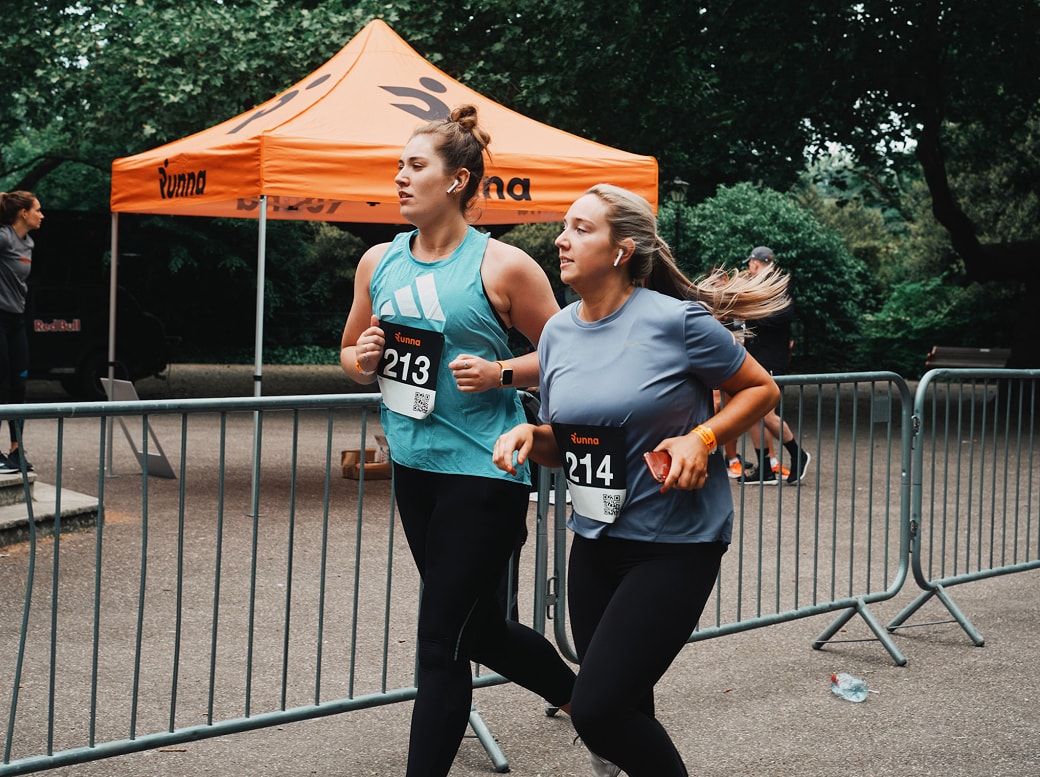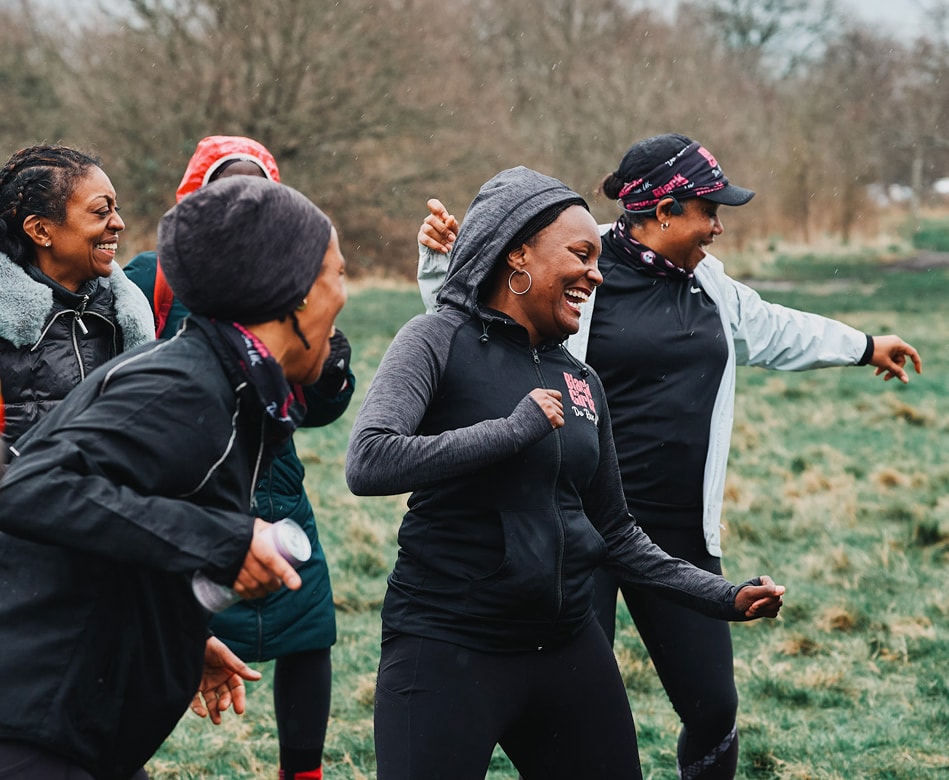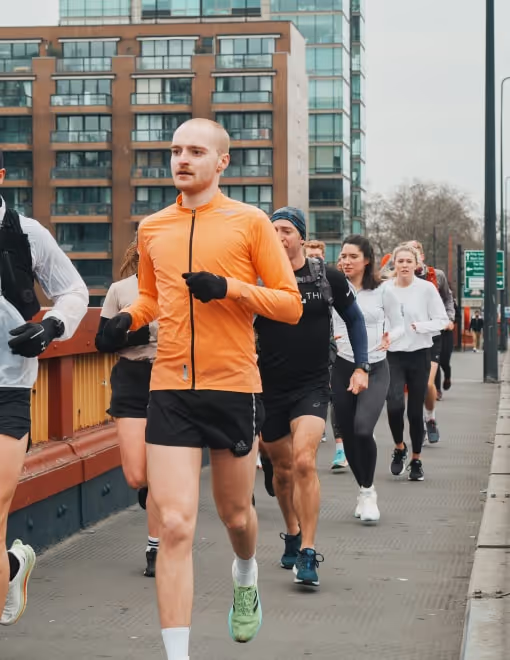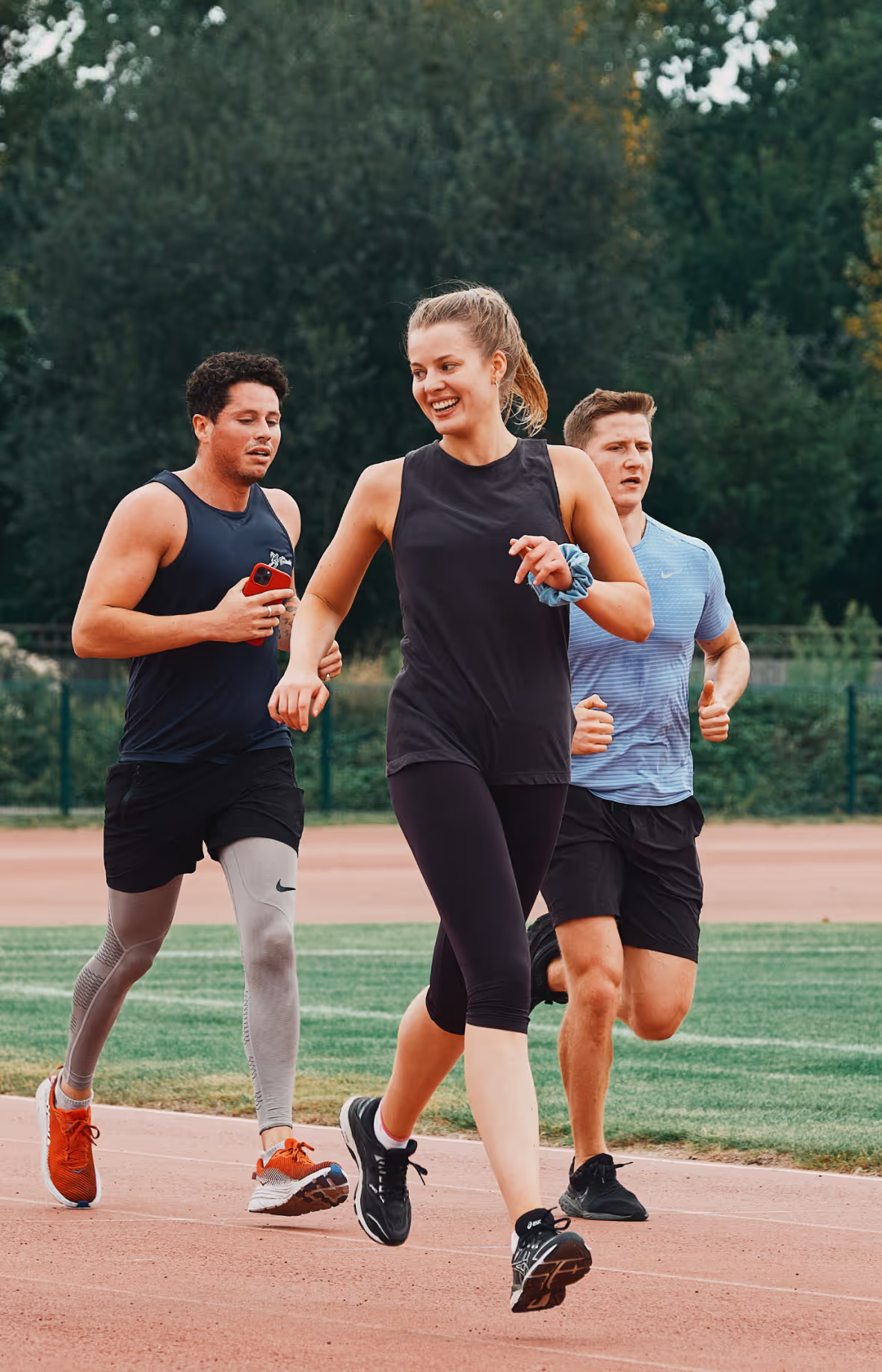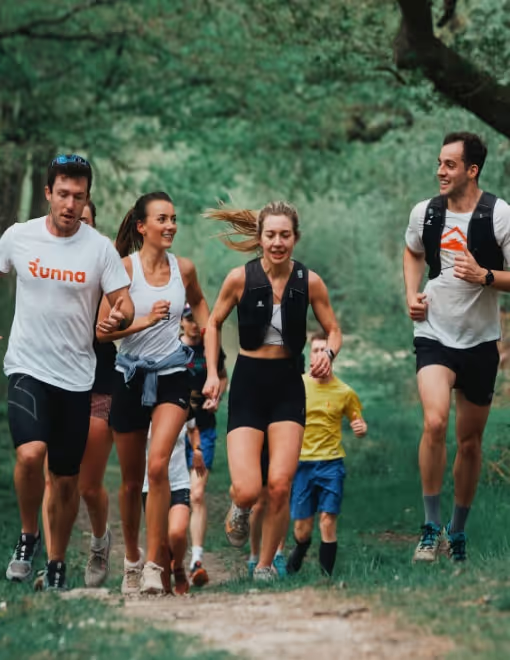10k Training Plan
Whether you’re stepping up from 5k or chasing a faster time, the 10k is the perfect balance of speed and endurance. With the right training plan, you’ll build strength, stamina, and the race-day confidence to perform at your best.
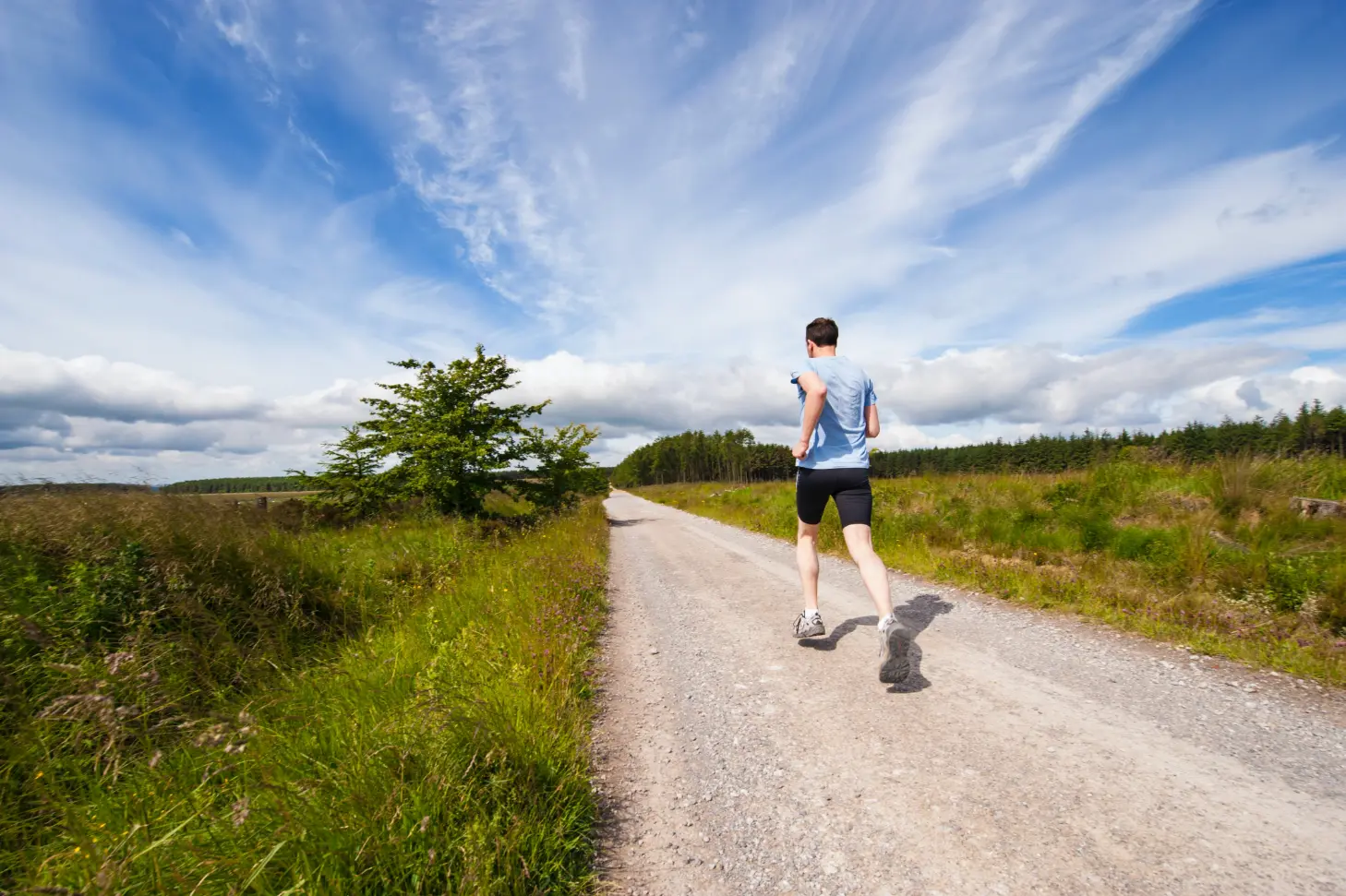
How to train for a 10k
A 10k is 10 kilometers (6.2 miles) - one of the most popular race distances in the world. It’s a favorite for beginners aiming beyond 5k as well as seasoned runners pushing for speed or using it as a stepping stone to longer events.
The 10k strikes the perfect balance: tougher than a 5k but less demanding than a half marathon, making it accessible while still offering a real challenge. For first-timers, it’s an achievable milestone. For experienced runners, it’s a chance to sharpen pace and test performance.
Success comes down to consistency. Running a few times each week builds endurance and rhythm, while having a clear goal - like signing up for a race - keeps motivation high. Running with friends or a local club can also make training more fun and keep you accountable.
The best way to pull everything together is with a structured plan. Runna will create a fully personalized 10k program based on your fitness, goals, and schedule. We will guide you through every step so you stay consistent, stay motivated, and get to race day ready to run your best.

Why choose our 10k training plan?
Whatever your experience or 10k goal, we’ll give you everything you need to get there.
How to get started
Runna takes the guesswork out of 10k training. From your first run to race day, you’ll know exactly what to do and how to get there.
Choose your plan
Set your goal - whether it’s your first 10k or you’re chasing a PB - and we’ll create a plan that adapts to your fitness and schedule.
Download the app
Download the app, log in, and you’ll have your full training plan - complete with runs, tips, and guidance - at your fingertips.
Run, run, run!
Simply tap ‘Go’ and follow along. Every run is laid out clearly, so you always know exactly what to do.
Hit that goal
Stick with your plan and you’ll line up for your 10k prepared to run strong, finish proud, and hit your goal.
Workouts explained
Your 10k training includes a mix of sessions - each with a clear purpose. Here’s what they are and how they’ll help you on race day.
Tips for your 10k training plan
These expert-backed tips will help you train smarter, avoid injury, and stay motivated. From pacing and recovery to gear and mindset, discover just a small snippet of all the tips, nutrition and coaching advice you'll have at your fingertips with a Runna training plan.
Nutrition
Training is only part of the equation - what you eat has a big impact on how you feel and perform. Fueling well helps you recover faster, train consistently, and show up on race day ready to go.
- Keep protein high to support muscle repair.
- Eat extra carbs before tougher runs or workouts.
- Try caffeine in training if you want an extra boost in speed or focus.
Focus on complex carbs like oats, quinoa, whole grains, sweet potatoes, fruit, and vegetables for steady energy. Avoid relying on lots of sugar, which can lead to spikes and crashes. And remember: the harder or longer your training, the more fuel your body needs - so adjust intake to match intensity and mileage.
Race day nutrition
On race morning, keep things simple and familiar.
- Eat a carb-rich meal 2–3 hours before your start time.
- Limit protein, fat, and fiber in this meal to avoid sluggish digestion.
- Stick with foods you’ve already practiced with in training - no surprises on the day.
Tip: For many runners, a light carb snack closer to the race can also help, but only if it’s something tested during training.
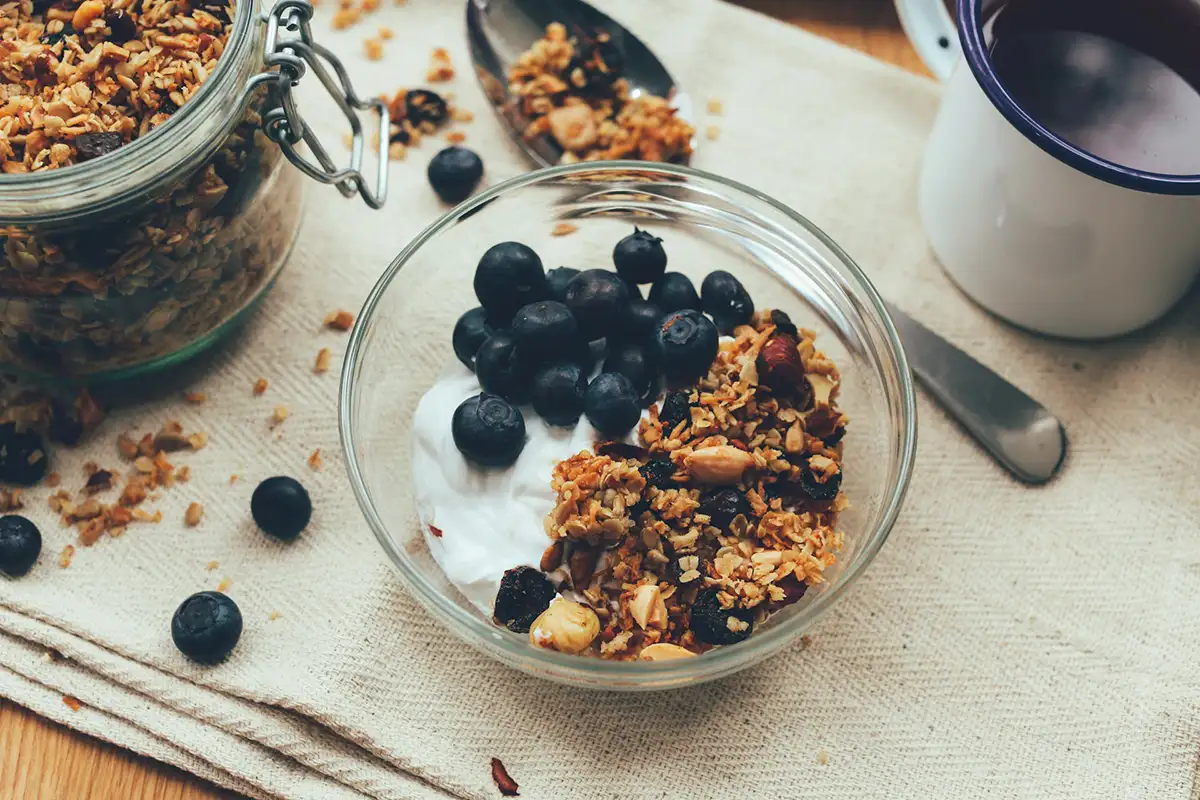
Cross-training and strength training
Adding cross-training and strength training to your 10k running plan helps you achieve two things: reduce injury risk and improve your performance.
Cross-training is any activity that builds fitness without the same impact as running. Cycling, swimming, rowing, or using the elliptical are all great options. These workouts keep your aerobic engine strong while reducing stress on your legs. They’re also a useful way to stay active if you’re carrying a niggle, or if you want to add variety to your week. Choosing something you enjoy makes it easier to stay consistent.
Strength training is one of the most effective ways to improve both performance and injury resistance. Building muscle strength improves running economy by 8–12%, which means you can run faster with less effort. Stronger muscles also handle impact better, reducing the risk of injury. Focus on calves, quads, glutes, hamstrings, and core.
Even 1–2 short strength sessions per week can make a big difference. With Runna, you can add a personalized strength plan to your program, tailored to your schedule, equipment, and current level.
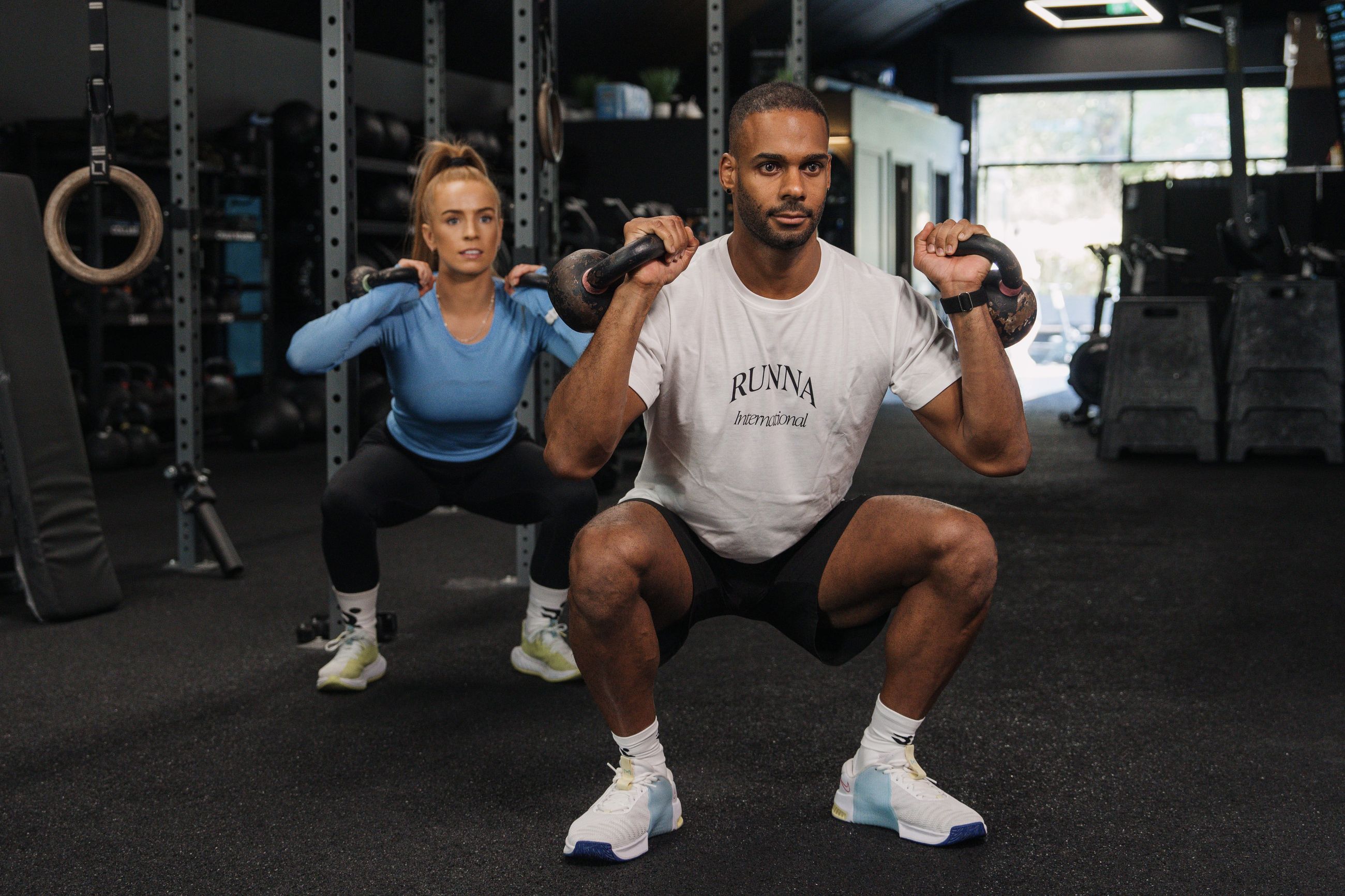
Pacing
A smart pacing strategy is key to running your best 10k. Too fast early and you’ll fade, too cautious and you’ll leave time on the table.
- Set your goal: Base it on your recent times. For example, if you want to run 50 minutes, you’ll need an average pace of 5:00/km, with a range of 4:57–5:03/km for flexibility.
- First 3k: Start slightly slower than goal pace - about 5s/km. Expect adrenaline to make the first km feel quick, but dial it back to save energy.
- 4–7k: Lock into goal pace and stay consistent. Keep your breathing controlled and avoid surging, which wastes energy.
- Final 3k: Pick up the effort if you can. Push from 7k, and in the final kilometer, give it everything you’ve got.
Remember: For a PB attempt, aim for a flat, fast course. Adjust pacing if your race is hilly or on trails.
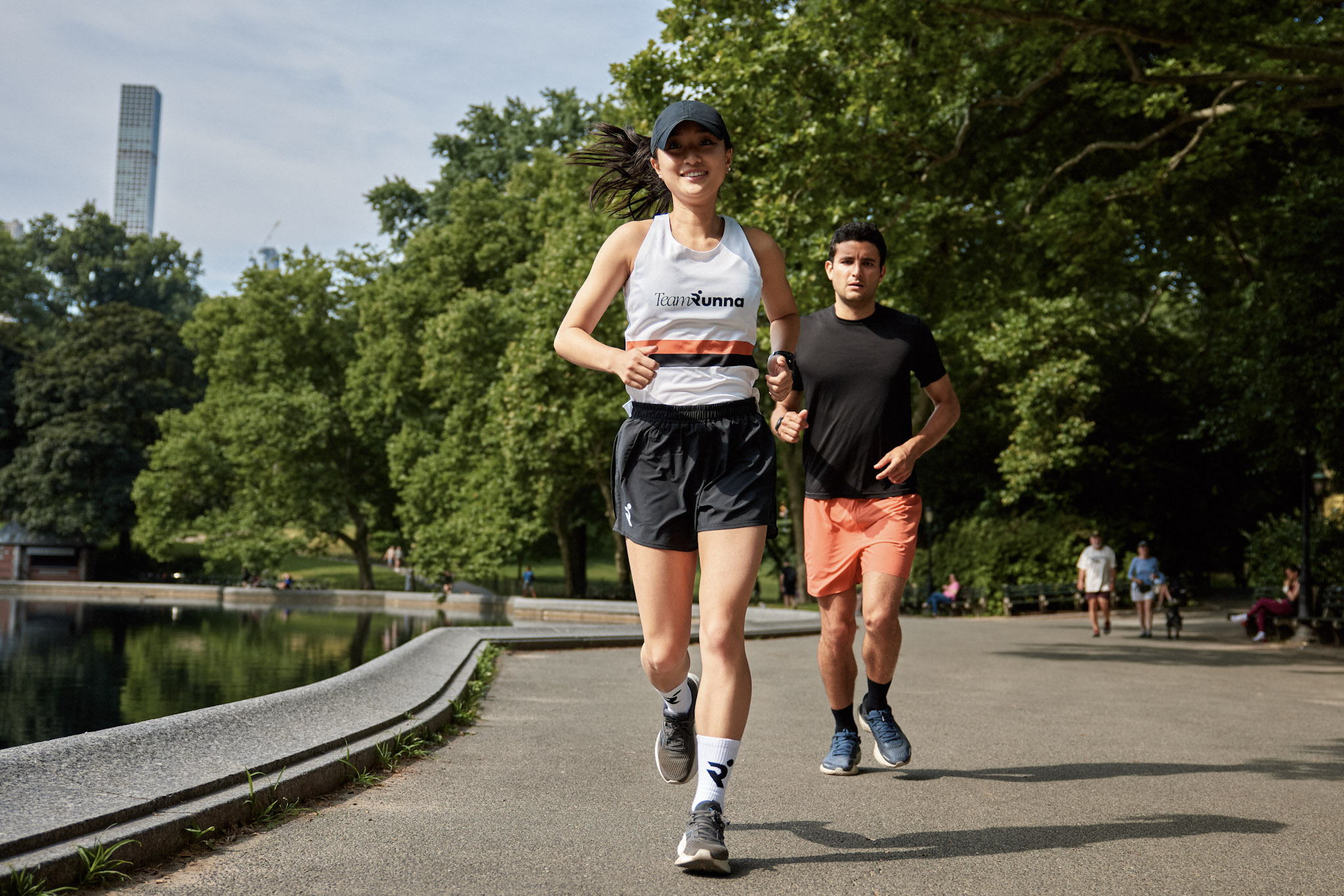
Form
Your running form is important for a few reasons. Running efficiently will:
- Protect your body from impact with the ground, even at faster speeds.
- Reduce the energy cost of running so you can maintain pace for longer.
- Lower your risk of injury, especially when training with speed sessions.
Running form matters at every distance, but in a 10k it’s the difference between holding pace or fading late.
- Run tall with relaxed shoulders.
- Keep strides short, quick, and light.
- Drive arms back to create forward momentum.
- Stay relaxed through your face, hands, and jaw.
Work on form during training so it feels natural by race day. Focus especially on the later kilometers of long runs or workouts, when holding good posture matters most.
Form is something you’ve developed over a lifetime, so changes might feel strange at first. Be patient and focus on small improvements.
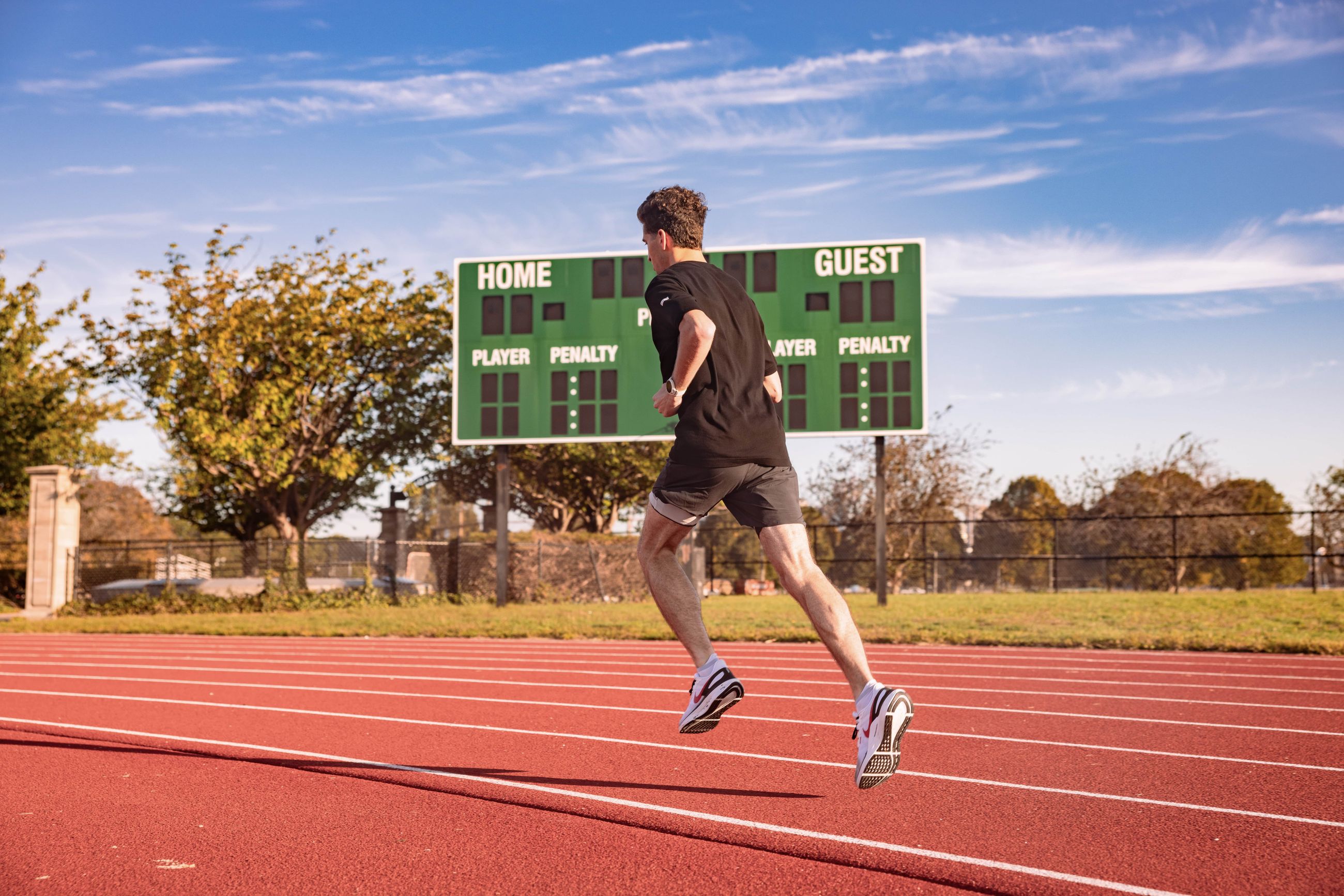
Recovery
Training only works if your body has time to adapt. Recovery keeps you consistent and injury-free over the full training block.
Here are the key things to focus on:
- Sleep: Aim for 7-9 hours each night. Quality sleep is when your body repairs, adapts, and gets stronger.
- Mobility work: Add yoga, Pilates, or stretching into your week to improve flexibility and reduce stiffness from speed sessions.
- Massage and tools: Use a foam roller, massage gun, or occasional sports massage to ease tight muscles and boost recovery.
- Nutrition and hydration: Refuel after runs with carbs and protein to replenish glycogen and repair muscles. Stay hydrated throughout the day to support energy levels and recovery.
- Active recovery: Easy movement - like walking, cycling, or swimming - improves blood flow and loosens sore muscles without adding more fatigue.
- Flexibility: Listen to your body. If you feel unusually tired or sore, take an extra rest day or swap a workout. One missed run won’t stop your progress, but pushing through fatigue could set you back.
After your 10k race, you’ll usually recover quickly, but still take a few easy days before resuming harder training.

Gear
The gear you use in training and on race day plays a big role in both comfort and performance. Here’s what to think about when preparing for your 10k:
- Shoes: Invest in a pair that matches your running style and stride. For 10ks, some runners prefer lightweight “racing shoes” to maximize speed, while others stick with their everyday trainers for comfort. Try both in training to see what feels best.
- Clothing: Choose technical fabrics (polyester or nylon blends) that wick sweat and reduce chafing.
- Running watch or GPS tracker: Tracking pace and distance is crucial in 10k training. A GPS watch or phone app will help you stay consistent. Runna integrates with Garmin, Apple Watch, Coros, and Strava so your training and progress sync automatically.
- Accessories: For shorter runs, you may not need much, but a lightweight belt or armband can help carry essentials like keys or your phone.
- Sun protection: A high-SPF sunscreen is worth using even on cloudy days, since you’ll often be racing in the morning or midday sun.
Golden rule: practice with all your kit in training. Don’t try new shoes, clothing, or gadgets on race day.

As featured in




Stories from Runnas
FAQs: All you need to know about running a 10k
10k distance: how long is a 10k in miles?
A 10k is 10 kilometers or approximately 6.2 miles.
How long will it take me to prepare for a 10k race?
The time you need to prepare for a 10k race varies based on your experience and fitness level but generally varies from 8 to 12 weeks.
One of our main 10k training plans is 10 weeks, which is enough for most runners to get into good running shape and improve their performance. If you feel you need more time (f.e. if you’re recovering from an injury), you can repeat a few weeks of training or set an intermediate goal (f.e. 5k).
Patience, consistency, and determination are key, regardless of whether you’re a complete newbie or an experienced runner looking to set a new personal best.
Which 10k training plan should I pick?
Pick a 10k training program based on your current fitness level, schedule, and the date of your next race.
What 10k finishing time should I aim for?
Aim for a 10k finishing time that’s in line with your experience and current fitness level. If this is your first time competing in a 10k race, simply focus on finishing the race – that’s already a great goal on its own!
If you’ve already done a few 10ks in the past and have been consistent with your training, you can aim to set a new personal best. Keep in mind, however, that the more experience you have, the harder it will be to set new records.
10k training and injuries: What should I do if I'm recovering from an injury?
If you’re recovering from an injury, the first priority is to take it slow and listen to your body. Consult a doctor (such as a physical therapist) to get their green light to start a 10k training plan. Return to training progressively and make sure you’re getting enough rest between training sessions.
You can do a 1-minute jog test and a 30-seconds hop test to see whether you get any pain in the injured area.
When you feel ready to start a training program, first go for a 10-minute test run broken down into 2-minute segments to see how you feel.
Read more about post-injury training to make the most of your running program and make sure you’re training safely.
I only have 6 weeks to prepare. What should I do?
Six weeks can be enough time if you’ve already run before or if you’re generally in a good shape.
If your time to prepare for your next race is limited, set a realistic goal and be consistent with your training. Simply aiming to finish can be a great goal, if you have limited experience with running.
To make the most out of each training session, use a personalized training plan. This will help you train safely and get as close to your goals as possible.
How can I improve my 10k time?
To improve your 10k finishing time, incorporate different kinds of runs into your training sessions, such as interval and tempo training, long runs, and speed work.
With a personalized training plan that uses a variety of approaches and types of runs, you’ll be sure to get the most out of your training and optimize your speed performance.
10k and general fitness: Do I need to do strength training to run a 10k?
Strength training and cross-training are not a must, but are still a great add-on to any running program. They can help you improve your strength, endurance, and stability and reduce the risk of injury.
How can I progress from a 10k to a half marathon?
To progress from a 10k to a half-marathon or a marathon, you need to increase your weekly mileage gradually and do longer runs. Interval or tempo training sessions are also a great addition to help you prepare for longer distances: by improving your speed, you’ll also improve your overall performance and endurance.
With Runna, you can get a personalized 10k to a half-marathon training plan to help you do your first half marathon.
Inspiration

The Ultimate 10k Training Guide
Whether you're training for your first 10k or your 10k PB, here is everything you're going to need to know

Pacing a 10k
Pacing is an important factor of running a 10k. Here are our top-tips to help you get that PB!

Top Tips for Race Day
Our Runna coaches have got together to provide you with the top tips to get the most out of your race day

